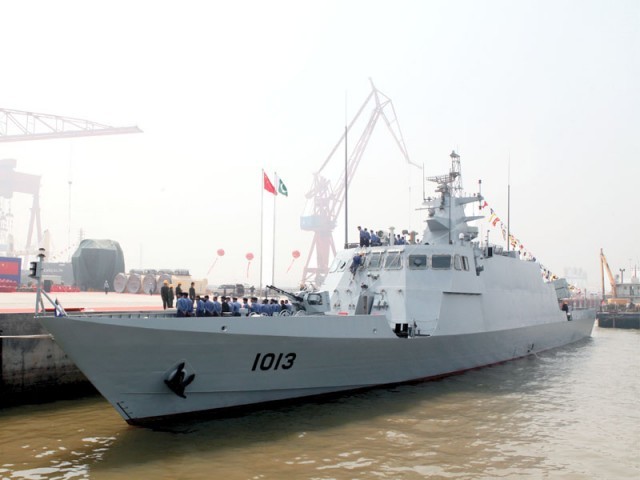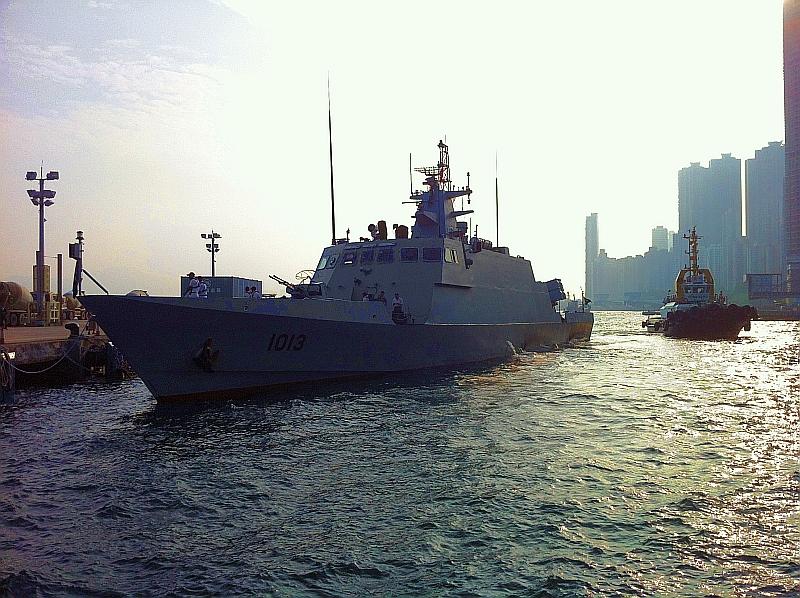Armstrong
RETIRED TTA

- Joined
- Feb 2, 2012
- Messages
- 19,384
- Reaction score
- 94
- Country
- Location
PNS Benazir Bhutto Shaheed?
If you can guarantee a PNS Zardari Shaheed...I'd take it !

Follow along with the video below to see how to install our site as a web app on your home screen.
Note: This feature may not be available in some browsers.

PNS Benazir Bhutto Shaheed?



So, you dismiss the following as inconsequential (just a few or the larger recent ships under 6k ton):No one is going to get scared of a 600 Ton FAC
You need to induct 6000 Ton Frigates and Destroyers to actually leave a mark


well sir, you seem to be one of the most informed persons; could you please tell something about PNS azmat design? Is it stealthy or..... I think a FAC should be stealthy like skjold or visby classHuangfeng class of the Type 021 class missile boat-205 t
Houbei class missile boat- 220t
Skjold class patrol boat-274 t
Hamina class missile boat - 250 tons
Gepard class fast attack craft -391 tonnes
Roussen class fast attack craft- 580 tons
Azmat class Fast attack craft -560 tons
Kılıç class fast attack craft-552 t
Nanuchka class corvette-560
Tarantul class corvette-480
Buyan class corvette-550 Tons
List of naval ship classes in service - Wikipedia, the free encyclopedia


Thanks; it means PNS Azmat is somewhat radar stealthy, but does not appear to be completely stealthy.Stealth refers to reduced signatures. There are a number of aspects to consider, including: a) radar reflectivity, b1) radiated underwater noise, b2) radiated overwater noise, c) thermal emissions (=heat), d) electronic emissions. To deal with these you find a) superstructure smoothing/angling + use of radar absorbing materials/paints, b1) sound and vibration proof equipment mounting e.g. for engines, b2) use of water jet, use of underwater exhaust venting, c) thermal shielding, exhaust cooling e.g. using water spray, and d) reliance on e.g. LPI (low probability of intercept) radars and on passive sensors.
Obviously, with Azmat, it is clear that there is in the design the use of superstructure smoothing/angling. There also appear to be passive sensors/channel to back up of substitute for active (i.e. radar) sensors as far as firecontrol is concerned. I don't see underwater exhaust venting or use of waterjets. All remainding things, we can't really tell from photo's. So, there you have it.
My impression is that with Skjold and Visby much effort has gone into increasing stealthiness in all respects, while with Azmat it is limited to some aspects.
E.g. Skjold: build of fiberglass/carbon compisite rather than steel, use of anechoic coatings of radar absorbent materials (RAM) in the load-bearing structures over large areas of the ship. Ship profile has a faceted appearance without right angle structures and few orientations of reflective panels. Doors and hatches are mounted flush with the surfaces, windows dito without visible coaming (edge of window aperture) and fitted with radar reflective screens.
E.g. Visby: hull built a sandwich design consisting of a PVC core with a carbon fibre and vinyl laminate. Good conductivity and surface flatness means a low radar signature, while good heat insulation lowers the infrared signature and increases survivability in case of fire. The composite sandwich used is also non-magnetic, which lowers the magnetic signature (against mines, torpedoes). Angular design reduces its radar signature / radar cross section. Gun barrel can be folded into the turret to reduce its radar cross section.

Thanks; it means PNS Azmat is somewhat radar stealthy, but does not appear to be completely stealthy.





it looks like an air def system in last video at 1:25

Well, since there are still some things we are unable to assess.... I'ld be cautious in passing judgement about stealthiness of this vessel, both in conservative and progressive p.o.v.Thanks; it means PNS Azmat is somewhat radar stealthy, but does not appear to be completely stealthy.
